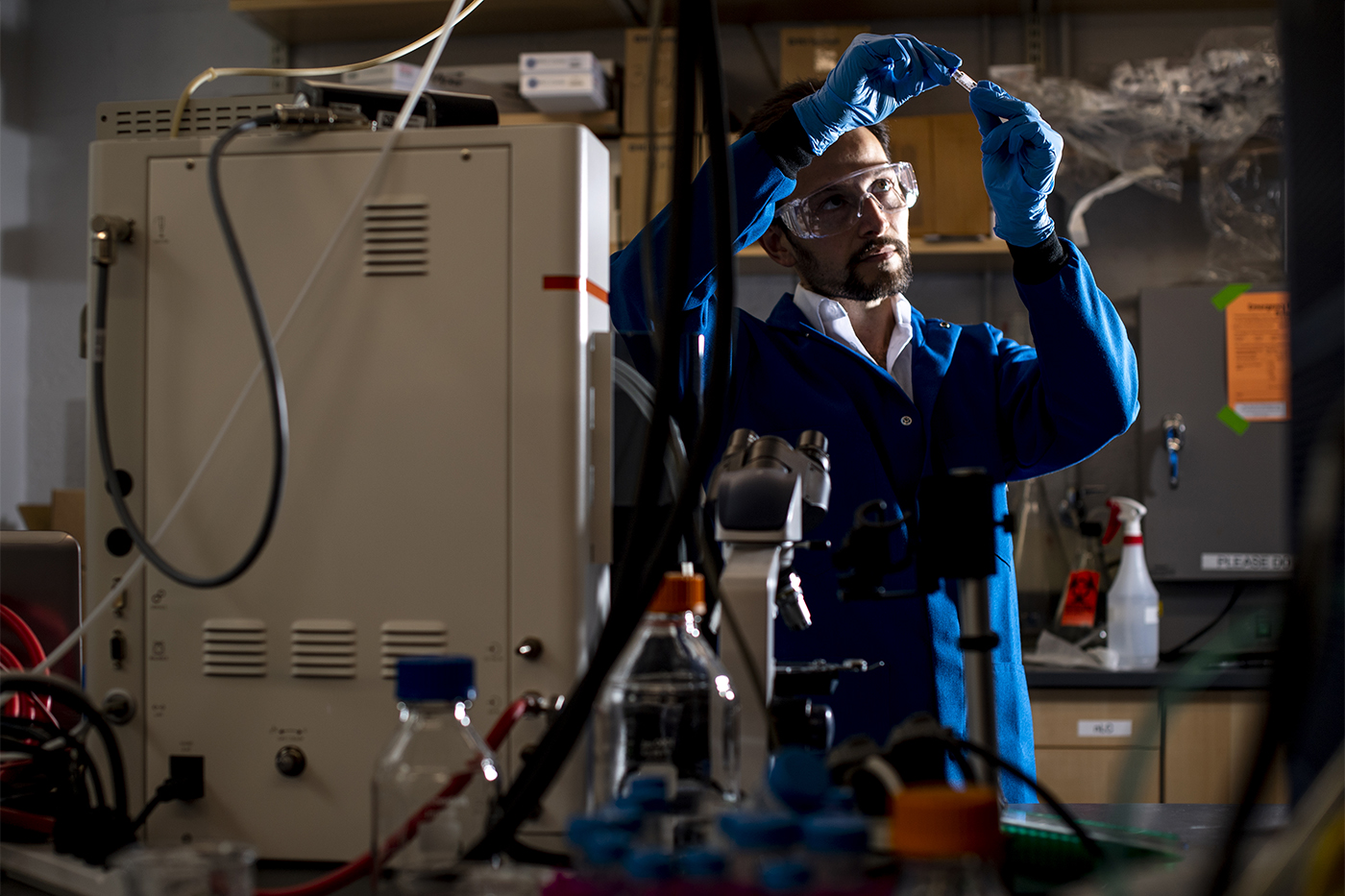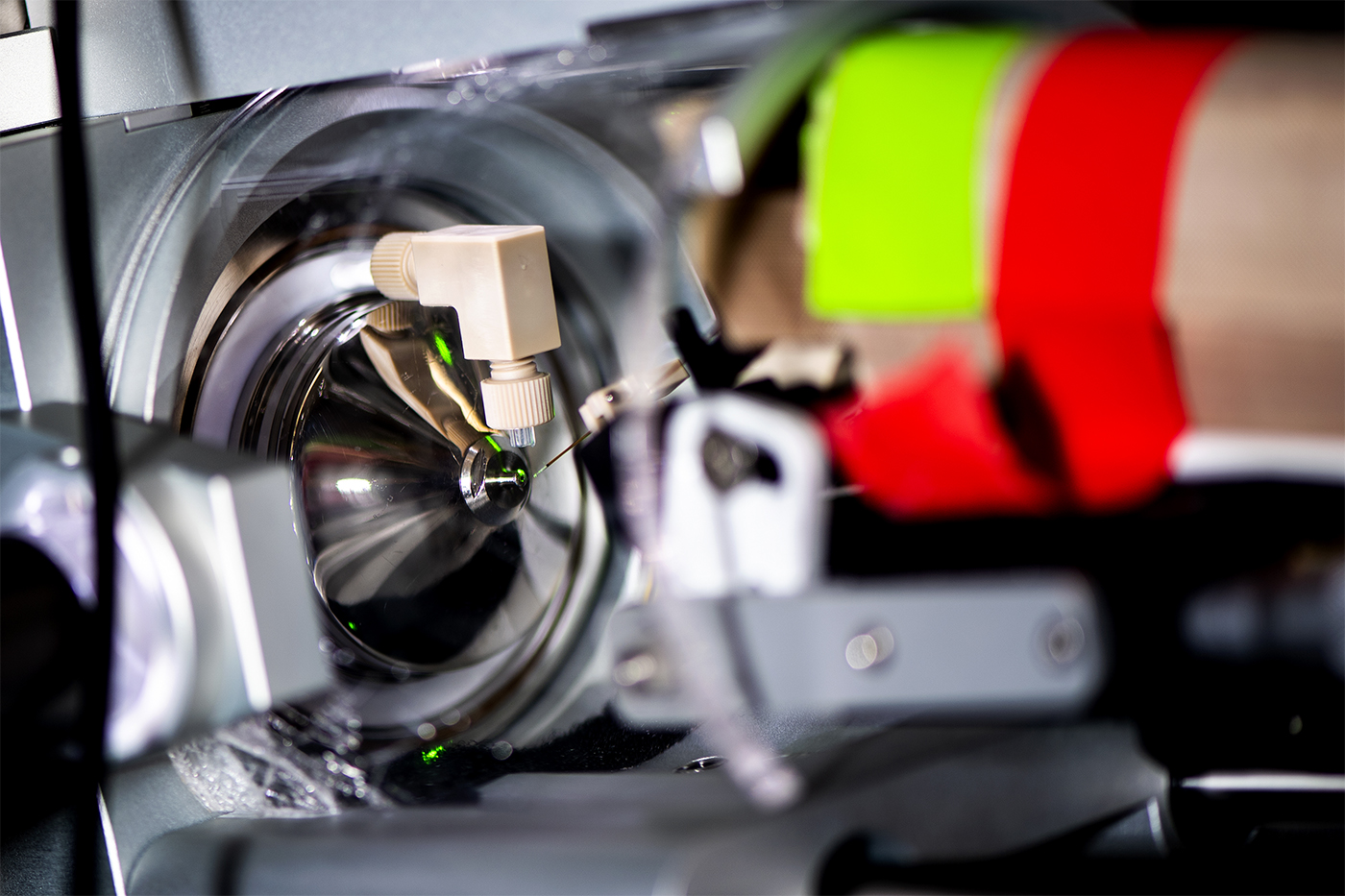Improving Protein Measuring Technology

Bioengineering Assistant Professor Nikolai Slavov has developed a breakthrough method of identifying more than a thousand proteins per cell which could help map the functions of them throughout the body.
This new technology can analyze more proteins in a single cell than ever before. What does it mean for cancer treatments?
Main picture: Nikolai Slavov, an assistant professor of bioengineering at Northeastern, has developed a data-driven technique to detect more than 2,000 proteins in a single cell. He says the new method could be used to help scientists develop therapies to treat cancer, diabetes, and other diseases with minimal side effects. Photo by Ruby Wallau/Northeastern University
Say you wanted to study how your smartphone works, and you grind it down to powder. If you try to use that fine powder to learn how the phone performs basic functions like playing a sound alert, you will certainly have a tough time.
That’s essentially the method biomedical researchers have used to estimate the abundance of proteins in our cells when they try to understand how these proteins regulate key functions, like the development of cancer. So far, that method is not working.
Conventional analyses involve grinding up a chunk of tissue, then mixing in large amounts of different types of cells to average protein populations and determine which proteins are in a single cell. That’s a problem if we want to accurately capture the richness of proteins and truly understand how they dictate the fate of our cells.

study of single-cell proteomics at the Mugar Life Sciences
Building. Photo by Ruby Wallau/Northeastern University
It’s a sampling error,” says Nikolai Slavov, a Northeastern researcher who is trying to improve protein measuring technology. “It doesn’t tell us whether some cells might have lots of proteins while others might have none at all.”
The proteins in our cells are complex molecules working in synchrony. They are the real workhorses of the cell. They orchestrate complex chemical reactions resulting in the high level functions that keep us alive and well, from growing tissue to fighting disease. Our bodies house thousands of different types of cells, which contain tens of thousands—if not millions—of different proteins.
But cells don’t just give their secrets away, and probing their proteins isn’t easy. For the medical community, it’s been difficult to assess the potentially infinite number of proteins responsible for biomechanisms involved in crucial functions like the development of cancer cells.
To capture single cell protein levels accurately, Slavov, an assistant professor of bioengineering, says the solution requires scientists to increase the number of analyzed protein copies to tens, hundreds, and thousands.
Last year he and his team developed technology using mass spectrometry, a technique bioengineers have progressively used in detecting and differentiating proteins, to identify more than a thousand proteins in an individual cell. This year Slavov’s team revamped this technique with data-driven methods, enabling them to identify over 2,000 proteins in a cell.
Until recently, the best single-cell protein estimates scientists could aim for were only about 100 proteins per individual cell. Most mass spectrometry experts in proteomics, the large-scale study of proteins, thought it was impossible to measure more than that.
“The biggest block was the perception that this was not possible,” Slavov says. “But I believed in my back-of-the-envelope calculations that we were going to make it work.”
Slavov’s single cell mass spectroscopy now offers a cheaper and faster technique that allows researchers to analyze a much larger number of single cells and results in much more accurate data.
“We will be in a position to understand mechanisms for disease much more accurately and discover new and fundamental biological principles of how a cell functions,” Slavov says.
Applied to enough individual cells, Slavov’s method could help pinpoint the biomechanisms associated with the genetic propensity for diseases like diabetes. His work could also contribute to efforts to enhance immune cells to specifically target cancer cells and not healthy cells. “Once we have that, we will be in a much better position to develop specific therapies with minimum side effects,” Slavov says.
Now that his work has paved the way for single cell protein analysis on larger scales, other scientists are joining Slavov in a community he says can move beyond measuring proteins and into understanding exactly what these proteins do. He envisions his tech will eventually enable the community to tackle the enormous volume of proteins that he could never analyze on his own.
Much like the proteins in our bodies, Slavov is working collectively with another 200 labs from various countries in the Human Atlas Project, an effort to identify all of the different single cells comprising the human body. His part of the project is supported by the Chan Zuckerberg Initiative and includes collaborators from the Max Planck Institute of Biochemistry in Germany, University of California Santa Barbara, University of Michigan, and Northeastern.
“It’s a completely different level of depth at which we can understand how different cell types function,” Slavov says.
by Roberto Molar Candanosa, News@Northeastern